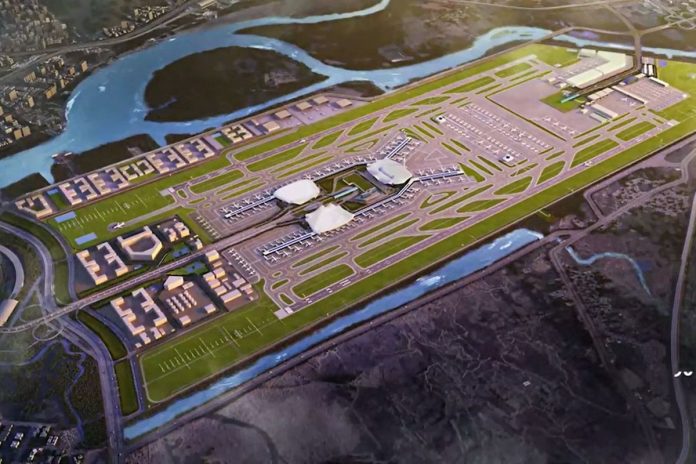Navi Mumbai International Airport (NMIA) is set to witness its first aircraft landing on 31 October on a trial basis.
This significant milestone will follow the commissioning of the Instrument Landing System (ILS), a critical step in calibrating flight paths to ensure the airport’s operational readiness.
The Airports Authority of India (AAI) conducted ILS testing last month but could not finish due to inclement weather and incessant rains. They plan to resume testing on 12 August.
Once the testing is completed, the pathway calibrated, and the report submitted, further processes will be carried out, as many tests and permissions are required before making the runway operational.
ILS is a precision runway approach aid based on two radio beams, providing pilots with vertical and horizontal guidance during landing. The localiser component offers lateral guidance to ensure aircraft alignment with the runway’s centreline, while the glide path component provides vertical guidance for altitude.
The airport’s first phase is expected to be fully operational by 31 March 2025.
The Navi Mumbai International Airport, spanning an area of 1,160 acres. The airport project comes with a total estimated cost of Rs 16,700 crore. It will be equipped with two runways positioned 1.55 kilometres apart from each other.
NMIA, which will be the second airport in the Mumbai Metropolitan Region (MMR), will address the capacity constraints at Chhatrapati Shivaji Maharaj International Airport.
The new airport would shake up the demand-supply dynamics by adding 40 per cent more passenger handling capacity overnight to the MMR region. Conceived in 1999, the work of Navi Mumbai airport started in 2017.
In a significant development, the International Air Transport Association (IATA) recently awarded the code ‘NMI’ to Navi Mumbai International Airport Private Limited (NMIAL). This designation is a crucial milestone for the airport, helping establish its global identity, reports Free Press Journal.
During its initial phase, the airport will have a capacity of 20 million passengers per annum and 0.5 million metric tonnes of cargo per year.
The first and second phases will feature one runway, one terminal building, and a passenger capacity of 20 million. The subsequent phases 3, 4, and 5 will introduce a second runway, four additional terminals, and an increased passenger capacity of 90 million.


